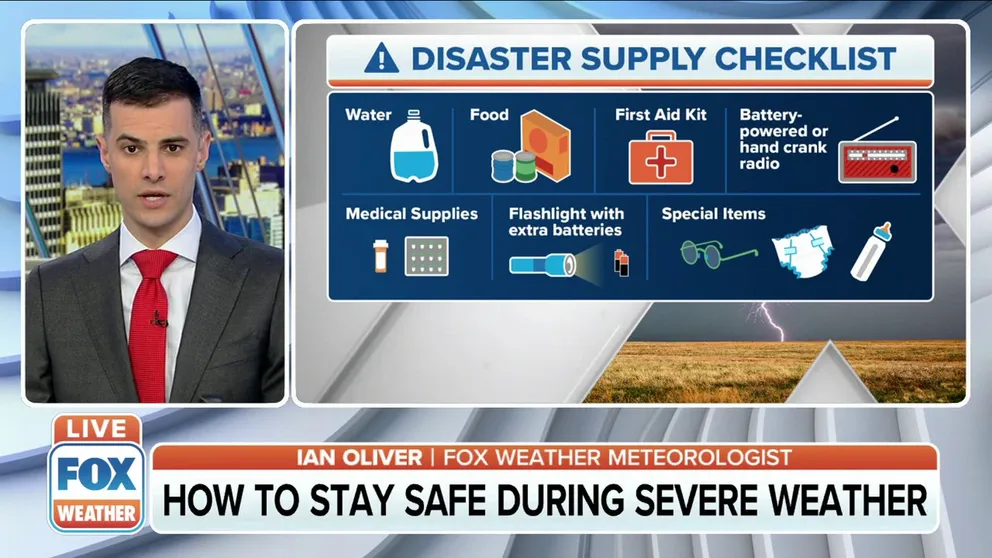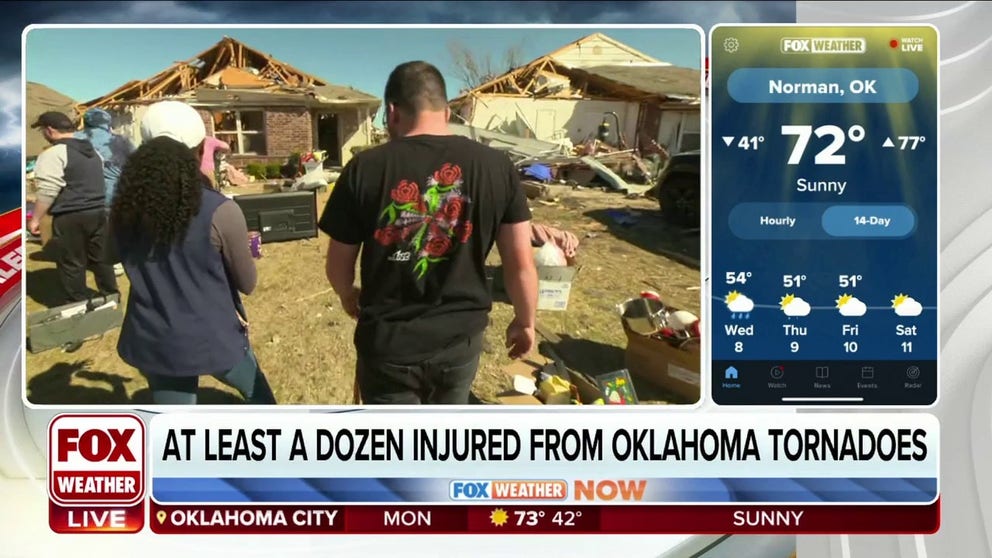Tornado safety: How to identify the safest places inside your home
How to stay safe during severe weather
FOX Weather meteorologist Ian Oliver explains how to stay safe during severe weather and tornadoes.
Do you know the safest area to go in your home or apartment in case a tornado hits?
It’s important to know where your safe place is before danger hits to better protect you and your family.
"So every family should have a safe area and if you're in college with your roommates or whatever conditions you live in, whatever your unit is, you should have a plan that you've talked about together," said Leslie Chapman-Henderson, President and CEO of Federal Alliance for Safe Homes, also known as the nonprofit FLASH.
Being in a reinforced safe room (or above-ground tornado shelter) is as good as an underground shelter in most situations and is usually the best place to be during a tornado.
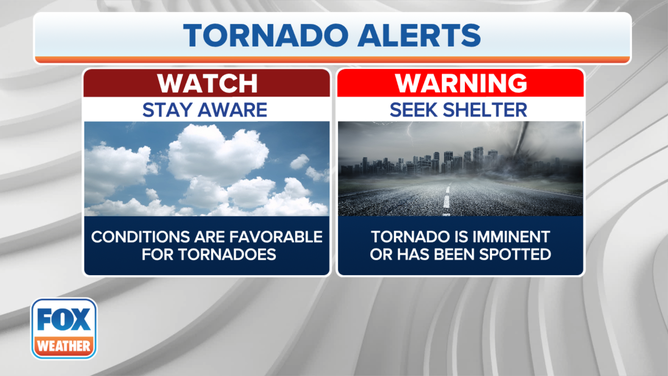
(FOX Weather)
The National Weather Service says safe rooms are specially-designed reinforced tornado shelters built into homes, schools and other buildings. FEMA, in close cooperation with experts in wind engineering and tornado damage, have developed detailed guidelines for constructing a safe room.
If you're like most people, you don't have a storm shelter. In this case, you need to find a location that is:
- As close to the ground as possible
- As far inside the building as possible
- Away from doors, windows and outside walls
- In as small of a room as possible
- Not on an upper floor
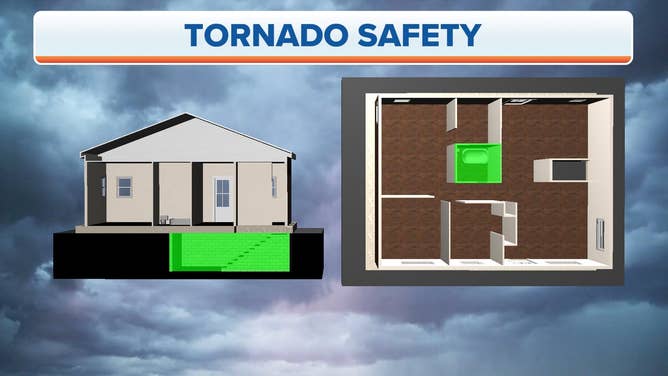
It’s important to know where your safe place is before danger hits to better protect you and your family.
(FOX Weather)
According to the NWS, bathrooms may be a good shelter, provided they are not along an outside wall and have no windows. Contrary to popular belief, there is nothing magically safe about getting in a bathtub with a mattress.
Bathrooms have proven to be adequate tornado shelters in many cases for a couple of reasons.
'We hunkered down into the bathroom': Norman, OK resident on tornado
A Norman, Oklahoma resident told FOX Weather multimedia journalist Brandy Campbell that most of his family's house was destroyed by an EF-2 tornado. His family, including the pet dog, survived the twister by taking shelter in a bathroom.
First, bathrooms are typically small rooms with no windows in the middle of a building. Secondly, it is thought that the plumbing within the walls of a bathroom helps to add some structural strength to the room.
"Ideally, if you are able to identify a room, it's your most interior room at the lowest level, windowless. And often this is a bathroom. Bathrooms are extra sturdy because of the plumbing and the reinforced wall supports for plumbing, they tend to be stronger rooms," said Henderson.
However, with tornadoes there are no absolutes, and you should look closely at your home when determining your shelter area.
A small interior closet might be a shelter. Again, the closet should be as deep inside the building as possible, with no outside walls, doors or windows. Be sure to close the door and cover-up.
"Many closets make excellent locations for shelter and they don't tend to have windows. So if your closet, if you can find a closet that can hold you and your loved ones and it's an interior part of your lowest level, that's also a very good option," said Henderson.
RELATED: What you should do to prepare for tornadoes
If a hallway is your shelter area, be sure to shut all doors. Again, the goal is to create as many barriers as possible between you and the flying debris in and near a tornado.
To be an effective shelter, a hallway should as be far inside the building as possible and should not have any openings to the outside (windows and doors).
The space underneath a stairwell could be used as a shelter as well because it is usually a very strong part of the house.
Identifying a safe place in an apartment building will work the same way. Avoid upper floors and rooms with windows and exterior walls. If you live on an upper floor, consider identifying another safe place to go in your apartment complex.
In some cases, the apartment clubhouse or lounge area may offer more protection if they’re accessible during a tornado watch or warning.
"In an apartment or multifamily building, you can talk to your building managers or landlords and find out if they have closets near the basement or lower levels that are windowless, typically made out of concrete, very sturdy, and have a plan for evacuating to those locations," said Henderson.
Mobile homes are not a safe place to be during a tornado no matter where you are inside.
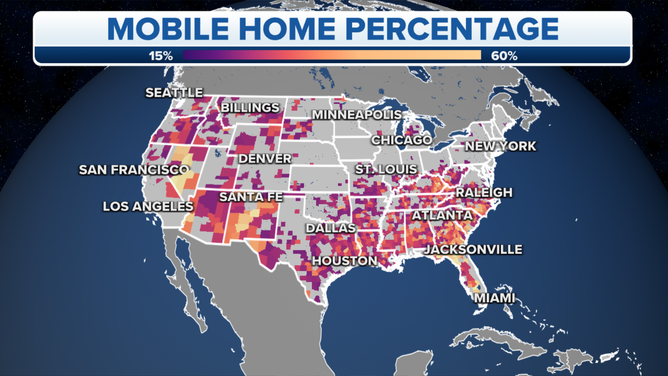
Mobile home percentage in the United States.
(FOX Weather)
"We can't ever recommend that people stay in a mobile home because of their very nature. Even if they're manufactured, they are somewhat mobile, which means they're not attached to a sturdy foundation in a permanent way," stated Henderson.
The important thing is to make the most of what you have and know where to go to seek the most possible protection during a tornado.
